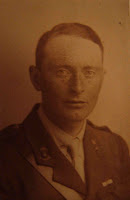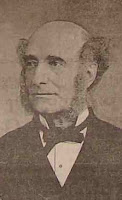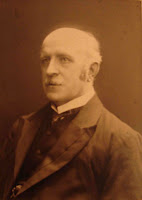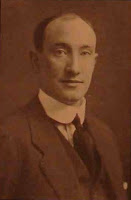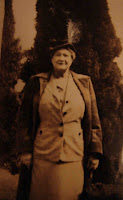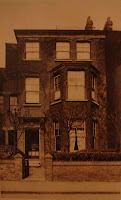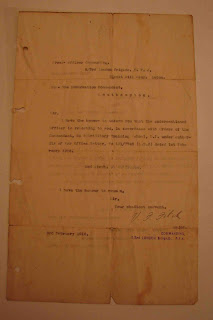Native Authorities.
There are twenty Native Authorities in the district comprising 11 Lamba, 8 Lima and 1 swahili.
The difficulty of encouraging these Authorities to take an interest in the lives of their people is immense, and to those who are keen in improving the lot of the natives the results, I consider, must of necessity be very disappointing. Seldom do these authorities think of the general interest of their people, and usually when some scheme is brought forward in which a ray of enlightenment appears to be present, on investigation it is found that the scheme is bound up with the pecuniary interests of the Chief or his family, or at the back of it lies the desire for self aggrandisement of some person connected with the authority. The commoner takes little or no interest in the Authorities and all he desires is a peaceful lethargic life. Under these circumstances progress must of necessity be extremely slow.
Generally the Authorities carry out the the functions required of them and there have been no complaints of a serious nature. All parts of the District, except two small areas, have been visited at least once during the year by travelling district Officers, and patrols by Messengers and tax collecting tours by native clerks have been made at frequent intervals. At all times the authorities have been helpful, but it is difficult to lose the impression that directly the eye of the Boma [British Overseas Military Administration] is turned from the area the Authority goes to sleep.
Meetings have been held during the year of all Authorities and their Counsellors, and an Indaba was arranged for H.E., the Governor, in November at Ndola. After the Indaba a four day programme was arranged for the Chiefs to see the major activities of Government in the native interest in the vicinity of Ndaba, but unfortunately the rains broke and the Chiefs refused to stay as they wanted to get back to their gardens. As some of the Chiefs had walked between 150 and 200 miles to come to Ndola and had to walk back again perhaps this apparent lack of interest can be understood.
The senior Chiefs were also called in to see the Acting Chief secretary and later Sir Alan Pim in August.
 NATIVE SELF GOVERNMENT IN URBAN AREAS
NATIVE SELF GOVERNMENT IN URBAN AREASThere is little to report under this heading. The Native Council of elders in the Ndola Location continues to do useful work and is much appreciated by the Location Superintendent. They are useful men and a power for good.
At the Indaba with H.E. the Governor [Hubert Winthrop Young, Governor from 1935-1938], the Secretary of the Native Council of Elders read an address.
The Native Farmers Association at the Kafubu farm plots continues to function. The natives take an interest in the farm school, but it always seems to me that their main object is to grumble about their rents, or to attempt to obtain something for nothing. Seldom do they lend an active hand or bend a back in the interest of their community.
The Native Welfare Society appears to be dormant at present.
NATIVE TREASURIES.
Native Treasuries were introduced during the present year and the Lamba were given a Treasury controlled by Mushili and a sub-Treasury controlled by Kalilele, the Lima a Treasury controlled by Ndubeni and the Swahili a Treasury controlled by Chisala.
The results have been very encouraging and the collection of revenue has been undertaken with considerable success. Bank accounts were opened for all Treasuries and subject to the counter signature of a District Officer the Treasuries pay in their own revenue and draw their own cheques for the payment of subsidies, wages and general accounts. A small office has been fixed up for them at the Boma where each Treasury has it’s own lock-up cupboard which contains their cheque book and unused counterfoil books etc.
Indaba’s were held for the preparation of the estimates for 1938 and quite a lively interest was taken by the Chiefs and Councillors. Much to the envy of the Lima and Swahili the Limba found sufficient surplus to estimate for permanent Treasury and Authority buildings in burnt brick to be built at Mushilis’ village. If this building is successfully erected I believe the interest in future of the Authories will be tremendously increased for they will see that something really solid, and of their own asking, is coming from their efforts.
NATIVE COURTS
A total of 972 cases were heard in the Native Courts during 1937. This is a reduction of 14 from the total in 1936, and this in spite of the addition of four new courts as a result of the inclusion of parts of the old Solwezi district in this District. The decrease may be partly due to less cases from urban areas being heard in rural courts which in fact had no jurisdiction, but more probably to laziness or dishonesty amongst certain Chiefs and their clerks who do not record all the cases which they take. This latter regrettable state of affairs is a result of constant changes and transfers during the year amongst District Staff and consequent loss of contact with and lack of supervision over the Chiefs of the District.
Chiwala’s Court appears to be the most respected as well as the busiest amongst the Native Courts of the District. It is noteworthy that it is one of the very few Courts in the District in which elders such as Chipembele – Chief Chiwala’s right hand man – play any pronounced part.
Six convictions only were quashed during the year, there were 3 appeals and six committals to prison.
There was general satisfaction amongst the Chiefs upon receiving their Court Warrants. They regard them with gratitude as another proof of Government’s intention to support them.
